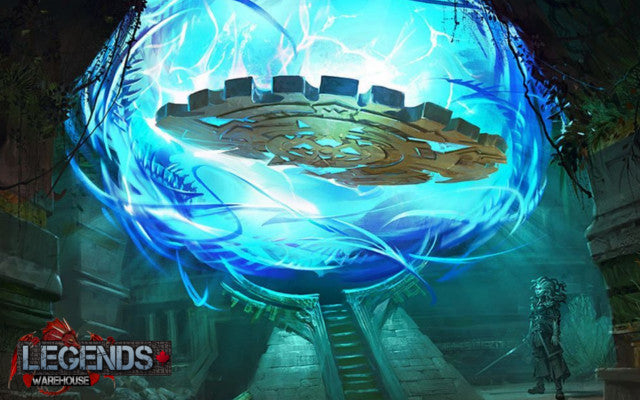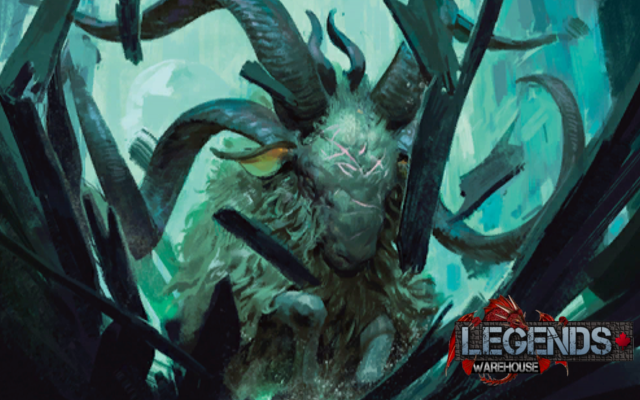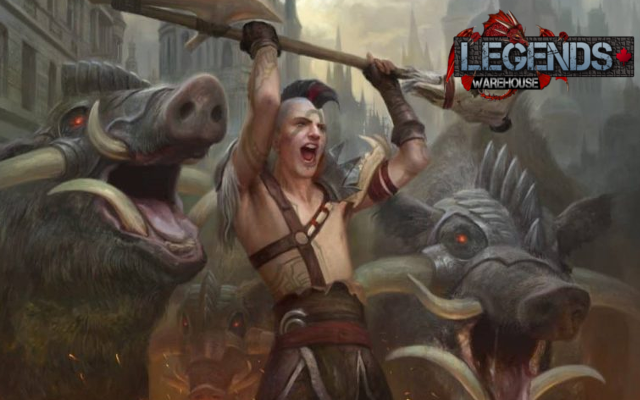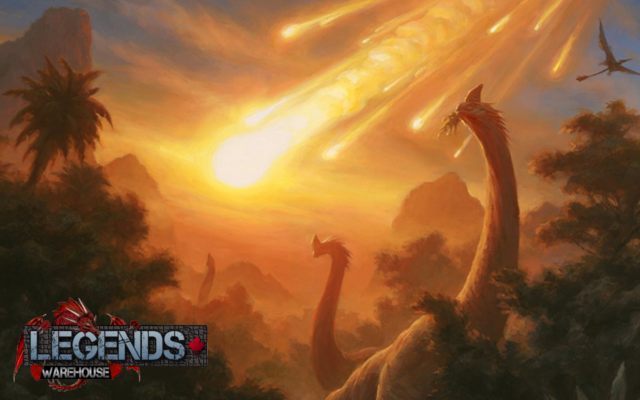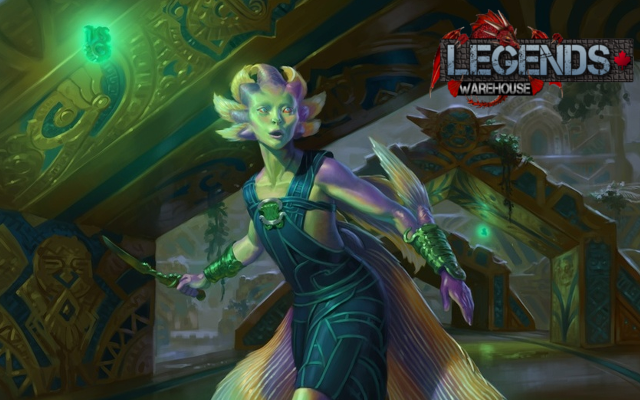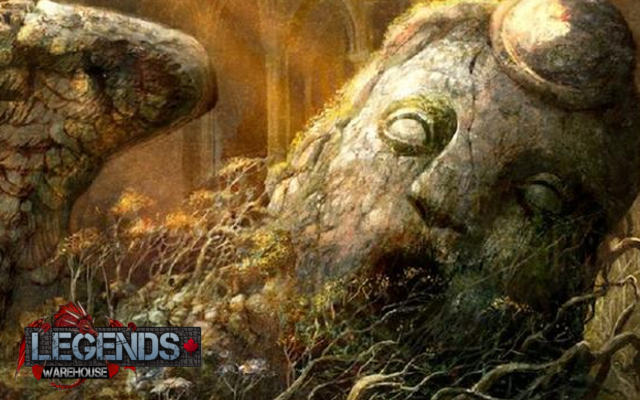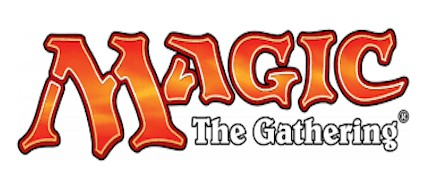Eternal Treasures in Rivals of Ixalan
- Legends Warehouse News
- 24 Jan, 2018
With the first batch of events on the books, we finally got our chance to see the cards from Rivals of Ixalan shine. While Standard was warped with the recent bannings and several archetypes emerged to fill the void, Modern and Legacy were surprisingly affected as well. Despite the higher power threshold, several new cards found homes in established archetypes and prospered. Silent Gravestone, Blood Sun, Merfolk Mistbinder, and Mastermind’s Acquisition all found places in Eternal formats, but just what makes them so powerful in these decks?
Silent Gravestone is, on the surface, yet another in a long line of cheap artifacts 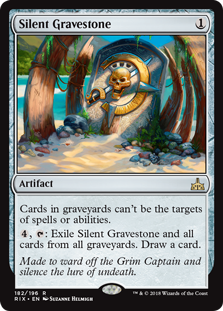 that hate on graveyard decks. While the cost to exile graveyards is steep compared to say, Relic of Progenitus or Nihil Spellbomb, its first clause allows it to sit there and shut off cards and effects that target graveyards. This means no Reanimate, Animate Dead, or even Life from the Loam are bringing back resources from your graveyard. It’s almost a parallel to Grafdigger’s Cage, which is one of the de facto graveyard hate cards in Legacy. However, what happens if the graveyard decks start to run Silent Gravestone themselves, not for the mirror but to protect themselves from other hate?
that hate on graveyard decks. While the cost to exile graveyards is steep compared to say, Relic of Progenitus or Nihil Spellbomb, its first clause allows it to sit there and shut off cards and effects that target graveyards. This means no Reanimate, Animate Dead, or even Life from the Loam are bringing back resources from your graveyard. It’s almost a parallel to Grafdigger’s Cage, which is one of the de facto graveyard hate cards in Legacy. However, what happens if the graveyard decks start to run Silent Gravestone themselves, not for the mirror but to protect themselves from other hate?
Dredge is one of the most difficult Legacy combo decks to deal with since they play on an entirely different axis than the rest of Magic. They play their own game where their graveyard is their hand, their spells cost nothing, and everything you kill makes zombie tokens. Seems fair, right? Recently, Dredge has been under the radar due to the prevalence of Deathrite Shaman and Surgical Extraction as graveyard hate out of the fairer, multicolour midrange decks like Czech Pile and Grixis Pyromancer. Silent Gravestone changes all this as it renders these two targeted graveyard removal cards useless. With a Gravestone in play, a Dredge player is free to sit back and bring back Ichorid and Prized Amalgam over and over unburdened by having to play around Deathrite Shaman exiling their cards. Unfortunately, it does turn off the plan of using Dread Return to bring back a win condition, but you end up with plenty of time to grind out the game with your recurable threats. As such, Silent Gravestone, like another card on this list, is an enabler of broken decks disguised as a hate card.
The other such enabler is Blood Sun, which has started seeing play in Green-Red Tron. Unlike its lunar equivalent which hurts Tron’s ability to ramp out gigantic colourless monsters, Blood Sun shuts off two of its biggest predators: Ghost Quarter and Field of Ruin. On top of drawing a card, this allows you to 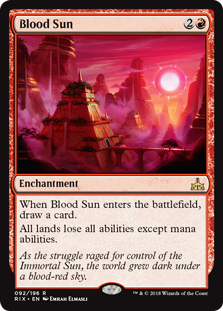 play your Tron pieces without a care in the world, and even renders pesky creature lands and fetches useless.
play your Tron pieces without a care in the world, and even renders pesky creature lands and fetches useless.
Blood Sun also gives a boost to Mono-Red Prison players, acting as a cantrip in an archetype devoid of card draw as well as another means of hurting the greedier manabases in Modern and Legacy. In fact, Blood Sun is even more threatening in Legacy since most decks run only the bare minimum number of mana producing lands, instead favouring fetchland-heavy manabases to get the most out of Brainstorm. This means Blood Sun can effectively “Brainstorm lock” a player by preventing them from cracking fetches and shuffling away bad draws, thus buying you plenty of time to get a clock, such as Goblin Rabblemaster or Chandra, Torch of Defiance, started. This strategy is especially devastating to Lands decks, which have adapted to playing through a Blood Moon, but are completely inert against Blood Sun since their lands are primarily there for their abilities rather than their mana. By using the Sun and the Moon in tandem, you create a nightmare situation for Lands decks and tax their already limited means of interacting with your prison pieces.
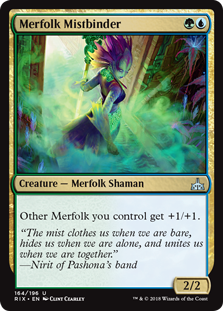
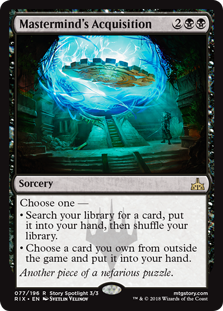
Modern Merfolk was one of the most hyped up archetypes after Ixalan was first spoiled. Players eagerly anticipated a slew of new fish to play with, and while Kumena’s Speaker and Merfolk Branchwalker were surprisingly good additions, the deck still felt like it was missing something to justify the added Green splash. Merfolk Mistbinder is exactly what the deck needed as yet another two mana lord, giving the deck even more redundancy and power to compensate for some of the necessary sacrifices, such as Master of Waves, to make room for the additional colour. While it’s disappointing other merfolk that have made waves in Standard like Deeproot Elite and Kumena, Tyrant of Orazca haven’t broken through into Modern, I believe that eventually we will see both making a splash in future Merfolk decks.
Finally, Mastermind’s Acquisition wasn’t exactly the flashiest card, but it was eagerly adopted by Commander players as yet another tutor effect they could play. For Legacy players, this card has started creeping its way into Storm decks, and for something to see play there it has to be powerful. What makes this such a good addition it the flexibility of grabbing cards out of your maindeck or sideboard, and despite costing twice as much as Infernal Tutor or Burning Wish, being a Black card in a deck reliant on Dark Ritual and Cabal Ritual makes this easy to get online. The inclusion of even a single Mastermind’s Acquisition in the maindeck opens up several options for Storm decks by allowing them to keep additional copies of their win conditions in the sideboard where they can’t be touched by discard or Surgical Extraction. That way, should anything happen to their maindeck kill card they still have access to the copies in the sideboard. Giving a combo deck as powerful as Storm options and flexibility is dangerous, and I’m really looking forward to seeing how this impacts its place in the metagame.
Rivals of Ixalan is home to some deceptively powerful cards, and through the proper implementation these cards can take waning archetypes and revitalize them. I’ve been impressed with how each of these cards have performed, and I see no reason why these cards won’t eventually become staples in their respective decks. We’re seeing twists on what people would expect, hate cards protecting the broken decks, and I’m absolutely in favour of it, and if you’re a fan of playing crazy combo decks, or even just the occasional kettle of fish, you should definitely keep an eye on these cards.

